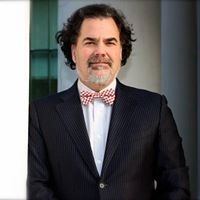Lafayette County, LA White Collar Crime Lawyers
Sponsored Law Firm
-
 x
x

Click For More Info:
-
Charles K. Middleton Attorney at Law Inc.
1309 Lafayette Street Lafayette, LA 70501» view mapCriminal Defense Experienced Criminal Defense Lawyer
You need an attorney with criminal defense knowledge who will vigorously protect your rights and interests.
800-670-5380
John Kevin Stockstill
Transportation & Shipping, White Collar Crime, Civil Rights, Personal Injury
Status: In Good Standing
FREE CONSULTATION
CONTACTFREE CONSULTATION
CONTACTMichael D. Skinner
Mental Health, Government Contract, White Collar Crime, Corporate, Criminal
Status: In Good Standing Licensed: 48 Years
 Charles Middleton Lafayette, LA
Charles Middleton Lafayette, LA AboutCharles K. Middleton Attorney at Law Inc.
AboutCharles K. Middleton Attorney at Law Inc. Practice AreasExpertise
Practice AreasExpertise
